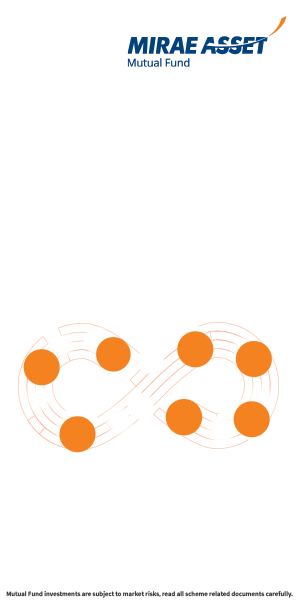Is Value investing the right investment style for you: Part 1

In Advisorkhoj, we advocate a structured approach to investing. When making any investment decision, the first question that you should ask yourself is, “what is the investment objective”? Is it capital appreciation or income or both? You should make asset class decisions accordingly; equity is the preferred asset class for capital appreciation, debt is suitable for income and if you want both capital appreciation and income, then hybrid assets (combination of debt and equity) are the appropriate investment choices.
Understand your risk appetite
Once you determine your investment objective and appropriate the asset class, the next question is, “what is your risk capacity”? Investors should understand the difference between risk capacity and risk tolerance, even though these two terms are often used inter-changeably. Risk capacity is how much risk you can afford to take based on your investment goal, tenure and your financial situation. Risk tolerance is your emotional capacity to absorb losses without panicking.
Risk tolerance may or may not be related to your risk capacity. Risk tolerances of investors are tested in the most in bear markets. Risk tolerance of investors is often linked with age (older investors have lower risk tolerance than young investors), stage of life (single or married, working or retired, at start of your career or near the end of your career, etc), disposition (calm investors tend to have higher risk tolerance than nervous investors) etc. Some investment experts associate risk tolerance with personal net worth - wealthy investors can lose millions or even billions without getting affected. Whatever the factors are, risk tolerance differs from investor to investor.
While risk capacity should be the most important factor in decision making, the importance of risk tolerance cannot be denied. Both risk capacity and risk tolerance should be factored in your risk appetite and investment decisions thereof. Your risk appetite will be lower than risk capacity – how much lower, will depend on your risk tolerance. We spent some time discussing risk capacity, risk tolerance and risk appetite, so that you can form a clear idea of your own risk appetite and investment temperament, based on which you can determine which investment style is suitable for you.
Investment goals versus investment needs
Investment goals are different from investment needs; the most important difference is the risk appetite. Let us understand this with the help of an example. Suppose there are two investors, one who is 30 years old, while another who is 45 years old. Both the investors need Rs 1 crore (at current prices, not inflation adjusted), by the time they retire – one in 30 years (assuming retirement age of 60), while for the other, 15 years. Obviously, the older investor has to save and invest more, but that is not all – the older investor may have less risk tolerance than the younger investor because he / she has less time than the younger investor to recoup losses, which are inevitable due to market cycles.
Also, older investors are likely to have more savings and investments in mutual funds and other savings / investment products than younger investors. But this may make the older investor more fearful (the more you have, more you fear) because if the market crashes, he / she stands to lose more compared to a young investor who has just begun his financial journey. The older investor is also likely to have more up-coming goal time-lines like children’s higher education, wedding, his / her own early retirement (forced or unforced) etc in the near to medium term compared to the new investor. These factors are likely to affect his / her attitude towards investments. Therefore, same investment goals may deviate into different investment needs for different investors(depending on their personal situations) and hence, the importance of investment styles because it caters to different investment needs.
Investment Styles for different investors
There can be many types of investment styles but broadly, there are three themes:-
Passive investing versus Active investing:
Passive investing is preferred by investors who are happy to get market returns. Passive funds like index funds or ETFs track a benchmark index and aims to give index returns. Active funds like diversified equity funds or sector funds aim to beat the benchmark index. The cost of passive funds is much lower than active funds, but active funds can give higher returns. Though passive funds are perceived to be less risky than active funds, it is sometimes an incorrect perception - the beta of active funds can be lower than the benchmark.Growth investing versus Value investing:
In the growth style, investors or fund managers, invest in stocks which showed high earnings growth in the past and more importantly, can deliver high earnings growth in the near term (over the next few quarters or years). In the value style, investors or fund managers, invest in underpriced stocks, in other words, stocks trading a lower valuation compared to its fair price. Growth stocks can appreciate faster in price in the near to medium term, but value stocks have lower downside risks and can give excellent returns in the long term, when their potential is realized.Large cap versus Midcap:
This is directly related to the risk appetite of the investor. Risk and returns are directly related in finance – higher the risk, higher the returns and vice versa. Investors who want high returns invest in midcap / small cap stocks or funds, because these stocks and funds have the potential to give very high returns. These investors should have high risk appetites because midcap / small cap stocks and funds are much more volatile than large cap stocks and funds. Investors with more moderate risk appetites prefer large cap funds, which are less volatile than midcap / small cap funds.
This was a fairly long prelude to the actual topic of our discussion today, Value Investing. Let us explain the reason. We discussed briefly about the characteristic of growth and value stocks earlier in this post, but we think that, it is important for retail investors, especially mutual fund investors, to understand context before adopting a particular investment style. I have read a lot of blog posts on Growth and Value Investing on the web. Most of the blog authors, writing about Value (or Growth) Investing, jump directly into explaining what value (or growth) stocks are, the characteristics of value (or growth) stocks and how to select value (or growth) stocks.
The majority of Advisorkhoj readers are retail investors, who want to invest in the stock market primarily through mutual funds. For retail investors among our readers, we think, that investment needs i.e. investment goals, investment tenures, risk appetites etc. should determine what investment styles they adopt, whether it is active versus passive investing, large versus midcap or growth versus value investing. With this backdrop let us now delve further into Investment Styles related to Growth versus Value Investing, but before that, let us understand if it is relevant at all for mutual fund investors.
Is value (or growth) investing of any relevance for mutual fund investors
Mutual fund investors do not pick stocks for investments themselves – they rely on the fund managers to select stocks. Then, how is growth or value investing is relevant for them? It is relevant because fund managers may have a preference for either growth stocks or value stocks or growth at a reasonable price (GARP). How will you know, if your fund manager has a preference for growth or value stocks? Sometimes scheme name may give you some clues, but you should read the scheme information document, or the product literature on the AMC website to get a sense of the fund manager’s investment style. The fund manager’s investment style will have an impact on your investment experience (returns and volatility). Since your investment experience is related to your risk appetite, investment style is relevant for fund selection.
Is value investing superior to growth investing, or vice versa
Legendary investor, Warren Buffet, is proponent of Value Investing; Buffett has created a huge amount of wealth for himself and the shareholders of his firm, Berkshire Hathaway, through Value Investing.Over the last 45 years or so, the MSCI (Morgan Stanley Capital Index) USA Value Index has outperformed the MSCI USA Growth Index. In India, however, some stock market experts argue that, growth investing works better in India because it is a growth market. On the other hand, value fund managers have been able to generate excellent returns for investors.In India, however, there is no conclusive evidence of the superiority of one investment style (growth versus value) over another.
Over long investment tenures, both growth funds (mutual funds which invest in growth stocks) and value funds (mutual funds which invest in value stocks) have given good returns to investors. Over the last 10 to 15 years (till the end of 2017), the overall performances of growth and value stocks were not very different. However, growth and value stocks outperformed one another in certain market conditions. For example, from 2006 till 2010 (including the crash of 2008), value stocks (represented in the MSCI India Value Index) outperformed growth stocks (represented in MSCI India Growth Index). However, in the 2012 to 2016 period, growth stocks (represented in MSCI India Growth Index) outperformed value stocks (represented in MSCI India Value Index).
The economic conditions, related to GDP growth and corporate earnings, were different in the two periods. The GDP growth rate in India was very robust from 2006 to 2010, except during the financial crisis of 2008. Value stocks did very well during this period, outperforming growth stocks. However, post 2011 we have not experienced the high GDP growth rates that we saw in the 2006 to 2010 period, though the GDP growth rates have been increasing from 2013 onwards. Growth stocks have done well during the 2012 to 2016 period.
Conclusion of this part
Over long investment tenures in India, there was not much to choose between performances of growth stocks versus value stocks. However, as discussed in this post, growth and value stocks outperformed each other, in different market conditions. We discussed earlier that, risk appetite of an investor can differ from his / her risk capacities. Two investors, with the same investment tenure, can have different risk appetites. This is where, investment styles are important because one style can address particular investment needs and risk appetites, better than another style and vice versa. In this context, we will discuss value investing style in more details in our next post. We will also compare and contrast, growth and value styles from an investor standpoint in the next post. Please stay tuned to Advisorkhoj for more………
Mutual Fund Investments are subject to market risk, read all scheme related documents carefully.
RECOMMENDED READS
Mirae Asset Global Investments is the leading independent asset management firm in Asia. With our unique culture of entrepreneurship, enthusiasm and innovation, we employ our expertise in emerging markets to provide exceptional investments opportunities for our clients.
Quick Links
- Fund Manager Interview - Mr. Neelesh Surana - Chief Investment Officer
- Fund Review - Mirae Asset Emerging Bluechip Fund : Best Midcap Mutual Fund in the last 6 years
- Fund Review - Mirae Asset India Opportunities Fund: One of the best SIP returns in last 8 years
- Fund Manager Interview - Mr. Neelesh Surana - Chief Investment Officer
- Our Articles
- Our Website
- Investor Centre
- Mirae Asset Knowledge Academy
- Knowledge Centre
- Investor Awarness Programs
Follow Mirae Assets MF
More About Mirae Assets MF
POST A QUERY






